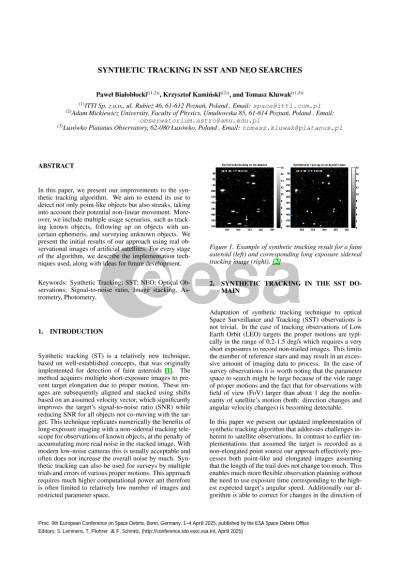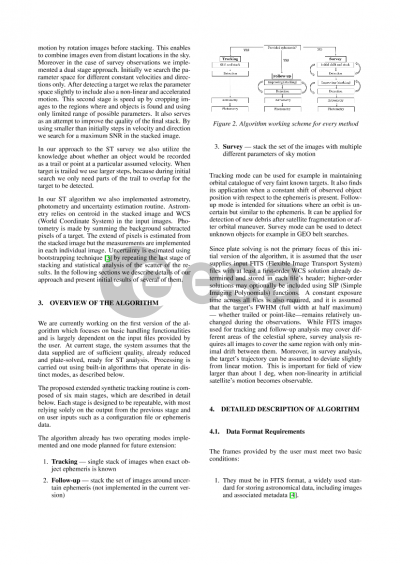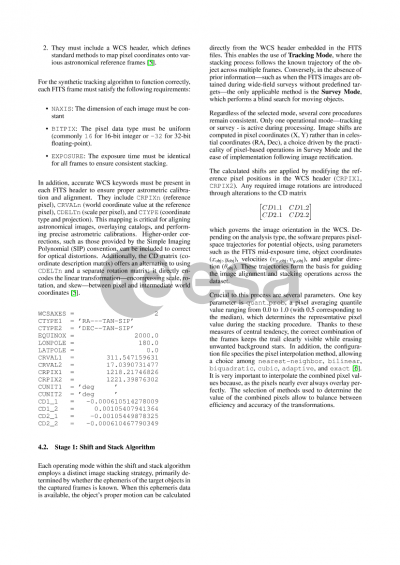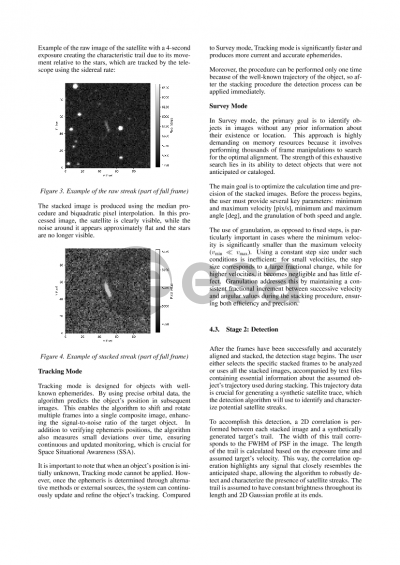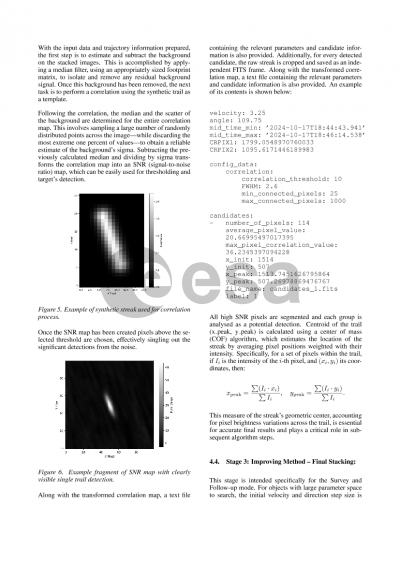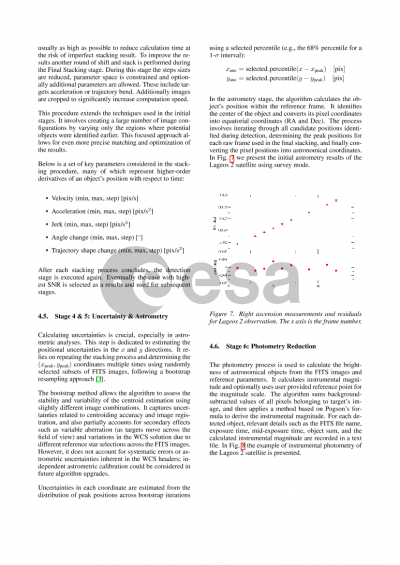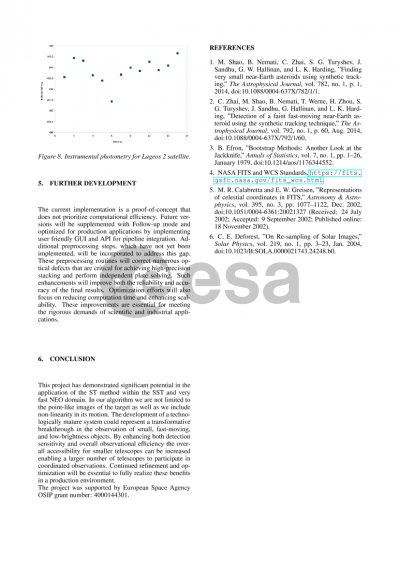Document details

Abstract
Synthetic tracking is a relatively new and innovative technique, though rooted in older concepts. This method enhances the signal-to-noise ratio (SNR) of faint objects by capturing multiple images with exposure times short enough to prevent trailing losses. The captured images are stacked with shifts corresponding to the assumed target's motion. In essence, synthetic tracking is trying to replicate long-exposure imaging with a non-sidereal tracking telescope and offers the crucial advantage of requiring only sidereal tracking observations and not requiring exact prior knowledge of the target’s motion. Originally developed for asteroid detection, synthetic tracking has great potential in ground-based optical observations of Earth-orbiting objects. This technique facilitates optical surveys of satellites and space debris as small as a few cm, and improves the limiting magnitude in tracking observations for objects with uncertain or drifting orbits. By removing the requirement for non-sidereal telescope tracking, synthetic tracking enhances space surveillance and tracking (SST) accessibility to simpler and more cost-effective sensors, expanding the range of monitoring capabilities. Nevertheless, applying synthetic tracking to Earth-orbiting objects, especially in low Earth orbit (LEO), poses several challenges. Current implementations usually assume the target is visible in the majority of images and is recorded with non-elongated point spread function (PSF). To obtain it satellite observations may require very short exposure times, on the order of milliseconds, which generates an excessive amount of data to analyze. Such an approach might also be suboptimal for general SST surveys, where multiple objects within the field of view may have significantly different angular velocities. We present an improved synthetic tracking algorithm specifically designed for SST operations. This improved algorithm handles images containing streaks, targets moving with changing angular velocity and allows for a combination of images at distant locations in the sky. It utilizes streak detection algorithms to identify targets and splits the stacking into two phases: coarse and accurate, which increases the quality of results and efficiency of the algorithm. Additionally, it manages complex data with non-linear motion on slightly curved trajectories, which might be necessary for surveys with a very wide field of view. NEO observations can also benefit from the algorithm, which can improve the detection limit of the smallest objects during extremely close approaches. Ultimately, it should contribute to more effective space debris monitoring and NEO surveys, supporting safer and more reliable space operations.
Preview
